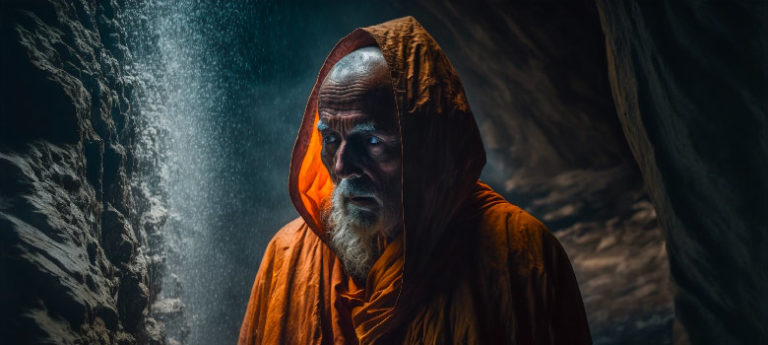What are the 7 chakras? A beginner’s guide
© KarmaWeather by Konbi - All rights reserved
The 7 chakras are the root, sacral, solar plexus, heart, throat, third eye and crown chakras.
The chakras of the Hindu tradition are energy centers located along the lumbar canal. According to different Vedic traditions, the chakras can be between 4 and 11 and sometimes much more, but the most commonly used system is 7.
Introduction to the 7 chakras of the Hindu tradition
Chakras or subtle energetic bodies are the keys to a thousand-year-old Indian traditional thought that envisions the human body, the animal world, the plant world and the whole cosmos as a set of energetic bodies, both physical and extra-material, unconscious and conscious. Within the human body, the chakras have the role of receptacle, distributor and energy transformer, capable of transmuting raw or physical energy into subtle energy and vice versa. The 7 chakras thus create an indispensable bridge between the human being and the cosmos, between the material and the spiritual, the conscious and the unconscious, the masculine and the feminine.
If they can not be observed directly, it is customary to consider each chakra as an energetic center along the spine to the top of the head, embellished laterally with cones that cross the skin, the body's boundary with the outside world such as receivers / transmitters of subtle energy.
The lotus begins life in the mud and darkness of a pond. It is only after a slow course towards the surface that its bud can finally hatch on the surface to give life to a magnificent flower. Thus, like the cycle of life, each chakra is represented by a symbolic lotus flower, each petal having a specific number, name, orientation, and function. Likewise, from the bottom to the top, from the root chakra (of red color) which is the base of the system and which absorbs and transforms the energy of the earth and nature up to the crown chakra (purple, white color) at the top of the head, each chakra is associated with a color of the chromatic spectrum. Finally, each chakra being a kind of energetic motor, each one has its own speed of rotation, the oscillation of the chakras of the lower part of the body (the physiological needs) being slower than that of the higher chakras (the mental, the spiritual).
Are Chakras real?
The chakras have no scientific basis because they stem from a spiritual tradition of ancient India, based on the observation, deduction and experience of Hindu teachers of thought rather than the precepts of modern science which rejects everything that can not be observed, analyzed and calculated rationally out of the field of knowledge. However, the chakras, because they establish a fundamental link between the physical world and the immaterial world, provide exciting answers to the existential questions that the human being poses, his nature and his relation to the cosmos.
The 2017 Nobel Prize in Medicine was awarded to researchers who have made considerable progress in chronobiology, which is a recent area of research in science, and which since the 1970s has been studying the genes that control the circadian cycle (the day-night cycle or biological rhythm) of each of our cells and each of our organs. Similarly, more and more doctors and psychiatrists are now interested in light therapy to regulate the sleep of some of their patients and find complementary methods to the treatment of depression. Finally, many scientific studies emphasize the deleterious role of noise pollution in large cities on the body and mind and its influence on many diseases.
The biological clock, the role of light and colors, the influence of sounds on our health, so many areas seriously studied today by modern science, while they have been an integral part of the Chakra philosophy for centuries. If it is therefore difficult to admit a chakra reality from the point of view of science, it is indisputable that Vedic Indian thought, like traditional Chinese medicine, allows current scientists to open the field of their research beyond materialistic rationalism, towards a more totalizing understanding of what makes us human beings and how we interact positively and negatively with our environment.
Is it safe to open my chakras?
Working to open one's chakras is to achieve greater self-awareness, inner peace, and greater harmony with the cosmos through the combined practices of meditation, yoga, and a healthier, more suitable food diet. It is true that certain currents of thought readily affirm that it is dangerous for an uninitiated person to work at the opening of his / her chakras, because beyond the knowledge and the assiduous practice that this supposes, they start from the postulate that the ultimate goal is necessarily to succeed in opening the crown chakra and access at the same time to supernatural powers.
If the purpose of the chakra activation exercises is indeed to attain enlightenment, to achieve a state of supreme consciousness and to free oneself from the cycle of reincarnations, let us remember that only a humble and pure soul, free from all vanity and thirst of power, can approach it.
The unblocking and harmonization of the chakras is a personal approach that should be made possible for all those who are interested in it, because this encourages more humility and love for others, quite the opposite of an individualistic and immature search for supernatural powers, which is bound to fail by its very nature.
It is also important to remain humble about the very principle of opening the chakras. Indeed, if a specific work on our chakras can unlock them and balance them in order to achieve a better knowledge of our body, our mind and our environment, the opening as such of all 7 chakras, including upper body chakras (throat, third eye, crown) is an assiduous and extremely arduous spiritual journey, which can hardly be considered outside the Hindu tradition and philosophy of yoga as practiced in India.
